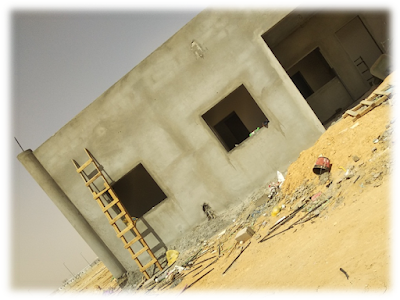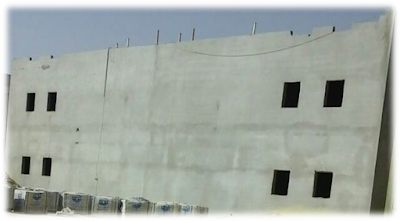PLASTER
CALCULATION
HOW TO CALCULATE THE QUANTITIES USED FOR PLASTER
or
How much Cement, Sand & Water
required for plastering
Table of Content
Ø Plaster Calculation
Ø Example & Solution
Ø Requisition
Ø 1) Cement
Ø 2) Sand
Ø 3) Water
Ø Conclusion
The quantity of plaster calculation is not so tedious rather than very easy. It just needs concentration. The following are the points that a site engineer always remembers at the site, whenever there is a need to calculate the plaster quantity i.e., (water, cement and sand).
1. Generally the ratio for Wall plaster is 1: 6 (1 part of cement and 6 parts of sand).
2. Mainly the Roof plaster ratio is 1: 4 (1 part of cement and 4 part of sand).
3. Thickness of the plaster is from 12 mm to 15 mm.
4. Good quality of cement should always be used (Different grades of cement) as well as good quality of sand.
5. Measuring box for measuring the quantity of sand and cement should be used at the site.
For better results,
let us solve the following example
EXAMPLE:
Suppose we have an Area of 300m2. This area is required to perform plaster. Take the ratio of cement and sand as 1: 6 and also the thickness of plaster as 12 mm. Calculate the required quantity of water, Cement and Sand used here in plaster?
From Question:
Plaster Thickness = 12
mm = 0.012 m
Area = 300 m2
Ratio = 1: 6
Quantity =?
<Remember, 1m =
1000mm >
Solution
Firstly, the calculation of the volume of plaster (Wet volume) is done and this volume is a wet volume (water + wastage + bulking of sand). Convert this volume into dry volume. After calculating the dry volume, be ready to find the quantity of
a)
Cement,
b) Sand
and
c) water
required.
Volume of cement
mortar required = (Area of Plaster x Thickness)
Volume of cement
mortar required = 300 x 0.012
Volume of cement
mortar required = 3.6 m3 (wet
volume of cement mortar with water).
But we have the need of
dry volume. To get the same,
Consider 20% bulking of sand at the site
&
15% Wastage of
sand at the site.
Therefore,
= 3.6 x (1 + 0.2 + 0.15) m3
or = 3.6 + (3.6 x 0.2 x 0.15)
|
=4.86 m3 |
This is the Dry Volume.
NOW
CEMENT REQUIRED
We know, Cement = (Dry
volume x Ratio x Density of cement) / Sum of ratio
Cement = (4.86 x 1 x 1440) / 7
< Density of cement is 1440 kg/meter cube >
Now Cement in Bags
: = 999.772 kg / 50
< 1 bag of cement contains 50 kg >
Cement in Bags : = 20.00 bags
OR
Cement can also be calculated in this method
Cement = (Dry volume x
Ratio) / Sum of ratio
Cement = 4.86 x 1 / 7
Cement = 0.694285 m3
<Remember in 1m3 = 28.8 bags of cement>
Therefore, Cement (bags) = 0.694285 x 28.8
Cement (bags) = 20
bags
SAND
REQUIREd
Also, we know, Sand (in Cubic feet) = (Dry
volume x Ratio x 35.3147) / Sum of ratio
< 1 meter cube =
35.3147 cubic feet >
Sand
= (4.86 x 6 x 35.29) / 7
Sand (in Cubic feet) = 147 Cubic
feet.
WATER
REQUIRED
Water
= (Weight of cement x water cement ratio)
Water = 999.772 x
0.5
< 0.5 kg water
every 1 kg of Cement >
Water = 500 kg or 500 Liters.
CONCLUSION
Cement = 20 bags
Sand = 147 Cubic feet
Water =500 Liters
In a 12 mm thick plaster, these quantities are
going to be used.




.jpg)
0 Comments